Car safety

He Haumaru ake te tatari kia tae tōu roa ki te 148cm
[Height chart, 2014]
This height chart is 150 cm high and folds to an A4 size.
The message "Its Safer to Wait till your 148" has been translated into Maori "He Haumaru ake te tatari kia tae tou roa ki te".
It features the cartoon 'Safe T Sam" and the height of 148 cm which is the height that children should graduate to using an adult seat belt.
Download Height Chart Maori 48cm>>
OR
Order the printed version here>>
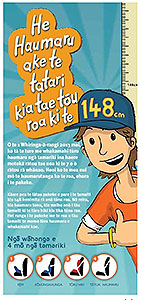
He Haumaru ake te tatari kia tae tōu roa kite
[Pamphlet, Māori version, 2014]
Safety Sam Pamphlet DLE (size 100mm x 210mm) In Te Reo Maori featuring the cartoon 'Safe T Sam".
As from November 1st 2013 it's the law that children under 7 years must use a child restraint while travelling in a vehicle. However, until children are 148 cm tall, an adult safety belt may not protect them properly.
The leaflet shows how to take the 5-step test to see if a child needs to be in a child restraint or booster seat.
Download GNZ0051 Safekids Restraint Maori Pamphlet>>
OR order the printed version here>>
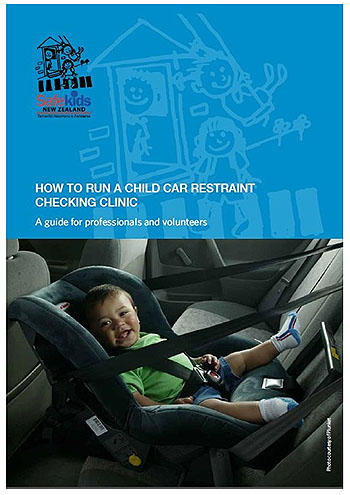
How to run a child car restraint checking clinic : a guide for professionals and volunteers
[Booklet, 2011]
This is a guide for both professionals and volunteers. Includes sections on: ‘Introduction’, ‘Why a checking clinic?’, ‘What are checking clinics and police check points?’ ‘Planning a checking clinic’, ‘Planning checklist’, ‘Where and when?’, ‘Equipment checklist’, ‘Advertising and promotion’, ‘Poster & Flyer templates’, ‘Invitation letter template / media release template’, ‘Traffic management site diagrams’, ‘Safety first’, ‘Recording and reporting’, ‘Checking clinic recording form’, ‘Evaluation’ and ‘Further information’. This items states that it "... has information and tips to help you to run a child car restraint checking clinic and/ or take part in a police check point. It does not provide expert advice on child car restraint use.
Child car restraints (seats) provide the best possible protection for a child if they are involved in a car crash. There are many makes and models of car seats so expert advice is vital. Hosting a checking clinic and/or a police checkpoint is the best way to provide families and whanau with advice about child car restraints and how to use them correctly.” The second PDF is the 'Child restraint checking clinic recording form' which is to be used in conjunction with the 'guide' to record the results of the checking clinic.
Download PDF Safekids How to Run a Child Car Restraint Check>>
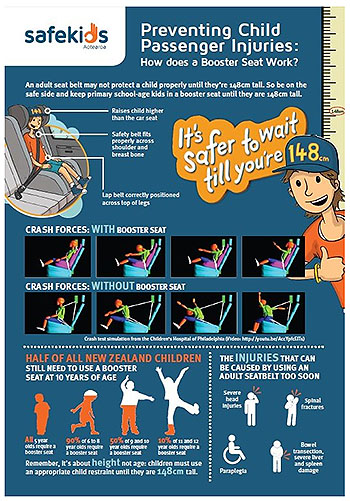
Preventing child passenger injuries : How does a booster seat work?
[Infographic, 2013]
This infographic explains how booster seats protect child passengers who are under 148 cm tall, regardless of their age.
Crash test forces with and without a booster seat are illustrated as are the injuries that can be caused by using an adult seat belt too soon. New Zealand child passenger injury data includes hospitalisations - 3 children every week, and fatalities - 18 children die every year and half of them are tamariki Maori. Charts show hospitalisation by ethnicity and age groups.
Download Infographic Booster Seats>>
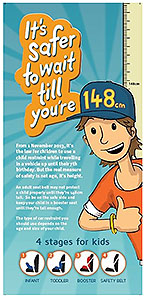
It’s safer to wait till you’re 148
[Pamphlet, 2013]
DLE leaflet featuring the cartoon 'Safe T Sam".
As from November 1st 2013 it's the law that children under 7 years must use a child restraint while travelling in a vehicle. However, until children are 148 cm tall, an adult safety belt may not protect them properly.
The leaflet shows how to take the 5-step test to see if a child needs to be in a child restraint or booster seat.
Download Safekids Restraint Pamphlet>>
OR
Order the printed version here>>

It’s safer to wait till you’re 148
[Height Chart, 2013]
This height chart is 150 cm high and folds to an A4 size.
It features the cartoon 'Safe T Sam" and the height of 148 cm which is the height that children should graduate to using an adult seat belt without a booster. It features the message: "Measure your kids against Safe T Sam's height chart.If they're under 148 cm, they need to be in a booster seat to get the full safety benefits of an adult seat belt."
It also features '4 stages for kids' (which describes in simple diagrammatic form the: 'infant' (rear facing), 'toddler' (capsule), 'booster' and 'safety belt' stages.
Download Safekids Height Chart>>OR order the printed version here>>
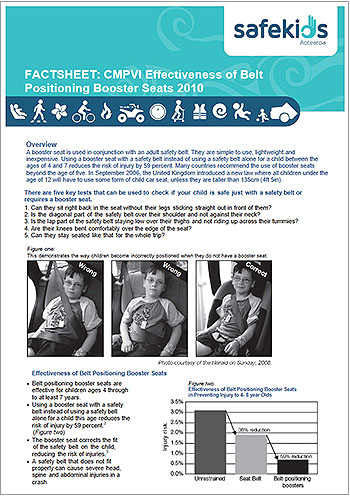
Child motor vehicle passenger injuries : effectiveness of belt positioning booster seats
[Factsheet, 2009]
This is a factsheet compiled by Safekids NZ for use as part of the Safekids Campaign 2009/10.
Child (0-14 years) motor vehicle passenger safety is one of the 2009/10 Campaign themes. Information and statistics are provided under the following headings: Overview, Best practice, Effectiveness of belt positioning booster seats, Advantages of using a booster seat, How long do children need to use a booster seat?
Download Safekids Factsheet CMVP Belt Positioning >>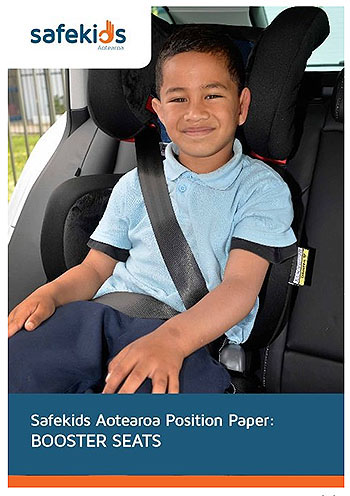
Booster seats
[Position paper, 2013]
This position paper: - describes the epidemiology of child passenger injuries in New Zealand.
describes how booster seats work to protect child passengers
presents evidence to support the use of booster seats until a child's height is 148 cm
offers evidence based recommendations on child restraint practices
Download Safekids Booster Seat Position Paper >>
